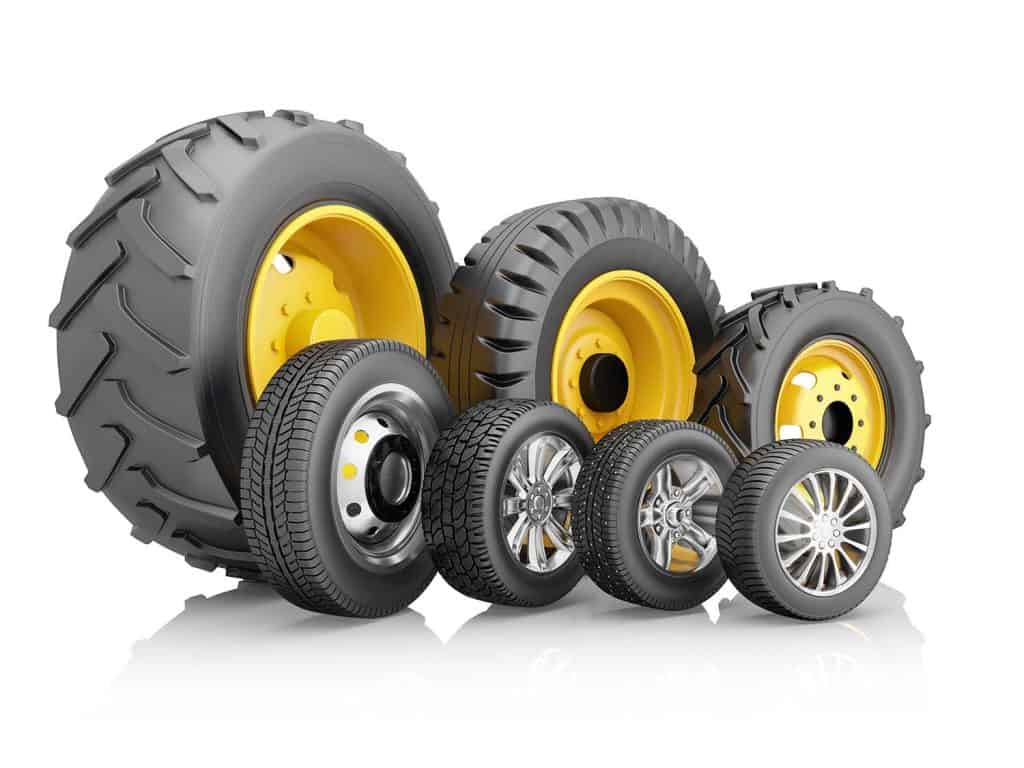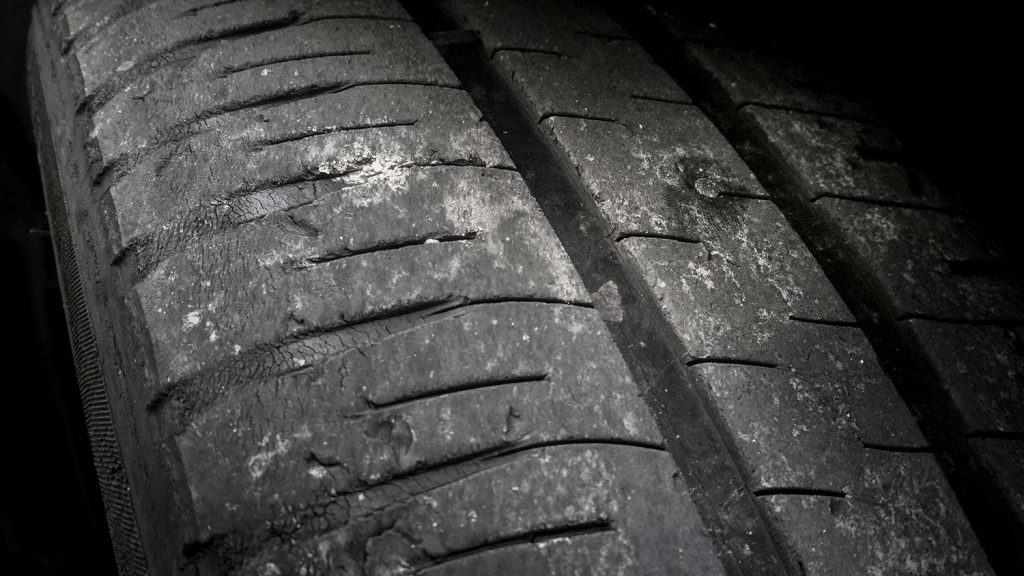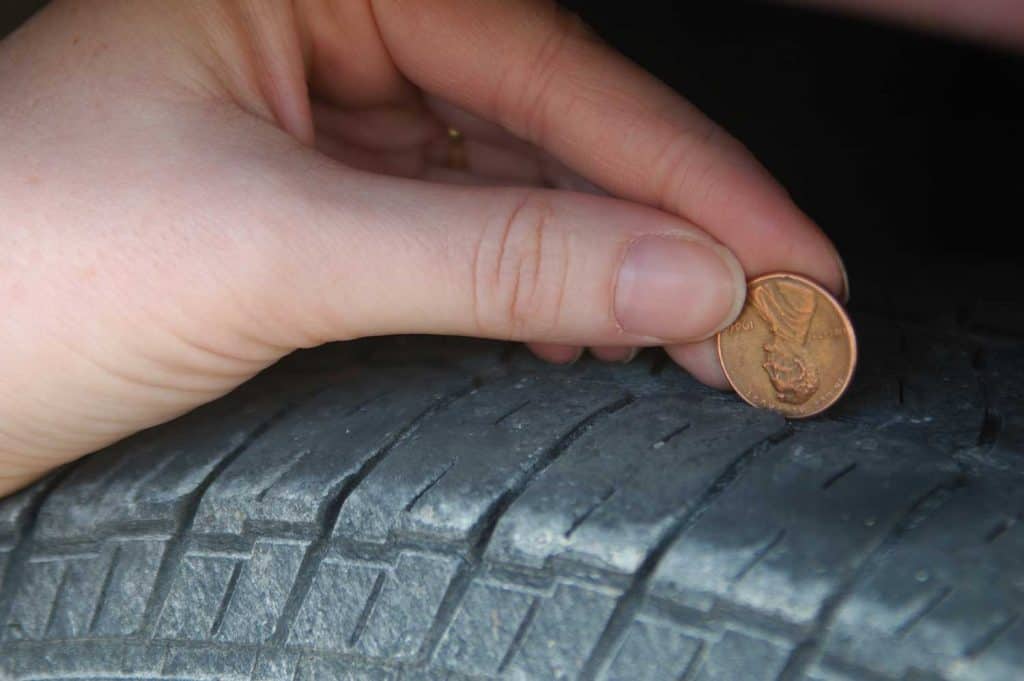When it's time to put new tires on your vehicle, it can be tempting to mix and match. Maybe you got a really good deal on one brand then found some others at a great price on Amazon. In this case, you're likely wondering if you can use more than one brand of tire on your car. We have done extensive research on the topic; see our findings below.
While mixing and matching tire brands may seem harmless, it is not advisable. Although tires of similar makes and the same size look very much the same, there are slight differences in tread and other aspects that will affect your vehicle's stability and your ability to stay in control. However, if mixing brands is unavoidable, it's imperative that you purchase tires of the same same size, tread pattern, load index, and speed rating.
Don't stop reading just yet. There is more to learn about proper tire care, including how long they should last, if they should all have the same pressure, proper rotating procedures, and more.

Can I Mix and Match Tire Brands on My Vehicle?
Putting different brand tires on a vehicle seems like a harmless practice. However, it can lead to problems with stability, traction control, and more. This is because no two brands produce tires with precisely the same specifications.
However, sometimes using different brands is unavoidable. In these cases, it's important to purchase them in pairs. For example, don't use one Michelin, one Continental, one Goodyear, and one Bridgestone. Instead, settle for a combination such as two Michelin and two Goodyear.
Just make sure they have the same tread pattern, size, speed rating, and load index. Always put matching brands on the same axle.

Does Rotating Tires Really Help?
Many people fear that rotating tires is just a ploy mechanics use to make money. However, this is not the case. On most vehicles, the front tires wear faster than the rear tires. Since the front wheels do the turning and support the most weight, the tire's outer edges will show more wear. The rear tires, on the other hand, wear more in the middle.
Moving the front tires to the back and vice versa allows them to wear more evenly, giving your vehicle more stability. It will also allow you to replace all four at once instead of only replacing two tires at a time. Although buying two tires is cheaper than buying four, your car will benefit more from having identical tires.
Do You Rotate All Tires?
Ideally, you should rotate all four tires at once. This will allow the edges of the back tires to experience wear when moved to the front, and the middle of the front tires will begin to wear when switched to the rear axle. If you have an identical, full-size spare, you can even rotate it into the pattern.
Use the following pattern to rotate the tires on your front wheel drive vehicle with a full size spare:
Move the passenger side front tire to the passenger side back. The driver-side front tire will now become your spare tire, and your spare tire will replace the passenger-side rear.
The passenger rear will then replace the driver side front, and the driver side rear will replace the passenger side front. By rotating your spare, you avoid having to replace a flat tire with one that has too much tread compared to the rest of them.
How Often Should You Rotate Tires?
For best results, manufacturers recommend rotating tires every 7,500 miles or every six months - whichever comes first. This generally lines up with oil changes for people using synthetic oil. If you use conventional oil, however, rotating every other oil change is a good practice.
How Many Miles Do Tires Last?
According to Bridgestone, the life of your tires will depend on several factors. How you drive your car plays a big part in this estimate. Another major factor is the types of terrain on which you drive. Other factors include tire damage, regular maintenance, and weather conditions.
That being said, the average life of tires, driven approximately 12,000 - 15,000 miles per year under normal conditions and driving habits, will typically last for about three to five years if properly maintained.
What are the Signs that You Need New Tires?

If you're worried about your tires, but you are unsure if you need new ones, use the following tips to help you decide if your tires need replacing:
- Tread Wear Indicator
- Penny Test
- DOT Number
Tread Wear Indicator
The most obvious indicator that you need new tires is low tread depth. According to Tires Plus, some tires feature tread wear bars. You'll find these raised bars inside your tire grooves between the tread marks. If your tread becomes level with the indicator bars, it's time to get new tires.
Penny Test

If your tires don't have wear bars, you can still easily tell if your tread is too low. All you need is a penny. Place the penny upside down, as pictured above, between the tire tread. Make sure the head is facing you. If you can see the top of Lincoln's head, your tread is too low.
DOT Number
The DOT number is another useful feature on tires. You'll see "DOT" then a combination of 11 or 12 numbers and letters. The last four numbers represent the week and year in which the tires were made.
For example, if the last four digits are 2020, the tire was manufactured the 20th week of the year 2020. However, if they were made before the year 2000, there will only be three numbers at the end.
You should not use tires made before the year 2000. If you discover that you have outdated tires on your vehicle, take them to a mechanic shop to have them discarded. Even if the tires are on a vehicle that is rarely driven, they have still experienced aging.
Old tires with sufficient tread may appear to be in good condition, but they are not structurally sound. For this reason, Bridgestone recommends not using tires that are more than 10 years old.
Should All Tires Have the Same Pressure?
The amount of pressure your tires require depends on the type of vehicle you drive. You will find recommended tire pressure on a panel inside your driver-side door. If the sticker on your door specifies only one PSI, then all your tires should have the same pressure. If you need more pressure in the front tires than the back, for example, this will be specified by the manufacturer.
Why Does My Tire Pressure Fluctuate?
We have established that all four tires should have the same pressure unless otherwise stated on your door panel, but your tires don't always cooperate. Have you ever put air in your tires only to wake up the next morning to tires with uneven pressure?
Don't panic; your tires probably don't have a leak. Instead, this fluctuation is normal and occurs most often in colder temperatures. However, hot weather can also be the culprit.
If the weather changes by 10 degrees Fahrenheit, your tires will likely lose or gain 1 PSI, depending on if there was a rise or drop in temperature. For example, if the temperature drops from 60 degrees to 50 degrees overnight, you could wake up with less tire pressure. If the temperature gets hotter, however, your tires will acquire more pressure.
If your car does not have a tire pressure monitoring system, you can easily check your tires using an air pressure gauge. See this pressure monitoring system on Amazon.
If you find yourself needing to add air to your tires, it's best to have a pump on hand instead of having to find one at a gas station or mechanic shop.
This air compressor allows you to preset the desired PSI, so you don't get too much or too little air in your tires. See this compressor on Amazon.
Do Bigger Tires Need More Pressure?
Tire pressure is measured in pounds per square inch (PSI). The amount of pressure needed depends on the weight of your vehicle, not the size of your tires. This is why you find the recommended PSI on your vehicle instead of listed on the tires.
Many people assume that larger tires call for more pressure; however, this is incorrect. Tire pressure and the amount of air in the tire are not the same thing. Therefore, larger tires will need more air to fill them, but you will still pump them to the PSI labeled on the door panel.
What Happens if You Leave Winter Tires on All Year?
Switching from summer to winter tires and vice versa can seem like a hassle. It also costs money to keep two sets of tires. However, it is important not to leave winter tires on all year. They are not designed for higher speeds or everyday use.
Using them all year will cause them to wear faster, and you will not have as much control of your car. In fact, instead of saving money, you will have to replace your tires more often and may even have to pay for damage caused by not having proper traction and control.
Summary
Unless you find yourself in a circumstance where you absolutely cannot get four of the same tires, it's important to have matching tire brands and styles on your vehicle. Mixing and matching can lead not only to vehicle damage but also accidents on the road.
For more information on tires, check out these other useful posts on our blog:


